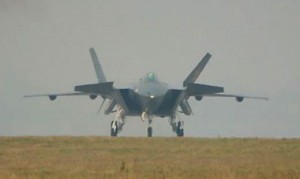
The Sukhoi PAK FA (Russian: Перспективный авиационный комплекс фронтовой авиации, Perspektivny aviatsionny kompleks frontovoy aviatsii, literally "Prospective Airborne Complex - Frontline Aviation") is a fifth-generation jet fighter being developed by Sukhoi OKB for the Russian Air Force.
The current prototype is Sukhoi's T-50. The PAK FA, when fully developed, is intended to be the successor to the MiG-29 and Su-27 in the Russian inventory and serve as the basis of the Sukhoi/HAL FGFA project being developed with India. A fifth generation jet fighter, the T-50 performed its first flight 29 January 2010. Its second flight was on 6 February and its third on 12 February 2010. As of 31 August 2010, it had made 17 flights and by mid-November, 40 in total. The second prototype was to start its flight test by the end of 2010, but this was delayed until March 2011.

Design
Although most of information about the PAK FA is classified, it is believed from interviews with people in the Russian Air Force and Defense Ministry that it will be stealthy, have the ability to supercruise, be outfitted with the next generation of air-to-air, air-to-surface, and air-to-ship missiles, incorporate a fix-mounted AESA radar with a 1,500-element array and have an "artificial intellect".
According to Sukhoi, the new radar will reduce pilot load and the aircraft will have a new data link to share information between aircraft.
Composites are used extensively on the T-50 and comprise 25% of its weight and almost 70% of the outer surface.It is estimated that titanium alloy content of the fuselage is 75%. Sukhoi's concern for minimizing radar cross-section (RCS) and drag is also shown by the provision of two tandem main weapons bays in the centre fuselage, between the engine nacelles. Each is estimated to be between 4.9-5.1 m long. The main bays are augmented by bulged, triangular-section bays at the wing root.
The Moskovsky Komsomolets reported that the T-50 has been designed to be more maneuverable than the F-22 Raptor at the cost of making it less stealthy than the F-22. One of the design elements that have such an effect is the Leading Edge Vortex Controller (LEVCON).
Avionics
The PAK-FA SH121 radar complex includes three X-Band AESA radars located on the front and sides of the aircraft. These will be accompanied by L-Band radars on the wing leading edges. Band radars are proven to have increased effectiveness against very low observable (VLO) targets which are optimized only against X-Band frequencies, but their longer wavelengths reduce their resolution.
The PAK-FA will feature an IRST optical/IR search and tracking system, based on the OLS-35M which is currently in service with the Su-35S.
Hindustan Aeronautics Limited will reportedly provide the navigation system and the mission computer.
Engines
The PAK FA was expected to use a pair of Saturn 117S engines on its first flights. The 117S (AL-41F1A) is a major upgrade of the AL-31F based on the AL-41F intended to power the Su-35BM, producing 142 kN (32,000 lb) of thrust in afterburner and 86.3 kN (19,400 lb) dry. In fact, PAK FA already used a completely new engine in its first flight, as stated by NPO Saturn. The engine is not based on the Saturn 117S and is rumoured to be called "127 engine". The engine generates a larger thrust and has a complex automation system, to facilitate flight modes such as maneuverability. Exact specifications of the new engine are still secret. It is expected that each engine will be able to independently vector its thrust upwards, downward or side to side. Vectoring one engine up with the other one down can produce a twisting force. Therefore the PAK FA would be the first fifth generation fighter with full 3-D thrust vectoring along all three aircraft axes: pitch, yaw and roll. These engines will incorporate infrared and RCS reduction measures.




